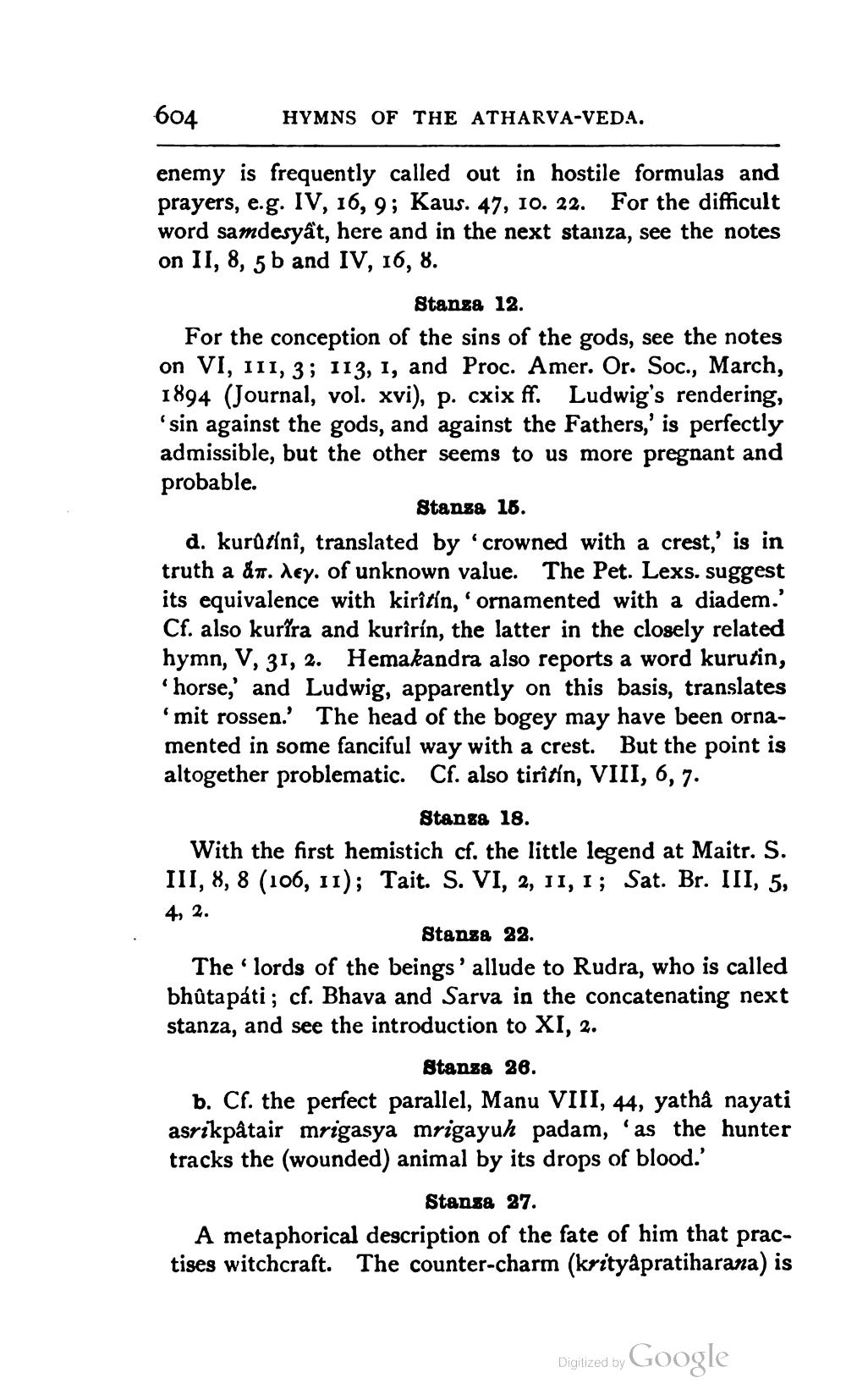________________
604
HYMNS OF THE ATHARVA-VEDA.
enemy is frequently called out in hostile formulas and prayers, e.g. IV, 16, 9; Kaus. 47, 10. 22. For the difficult word samdesyât, here and in the next stanza, see the notes on II, 8, 5 b and IV, 16, 8.
Stanza 12.
For the conception of the sins of the gods, see the notes on VI, 111, 3; 113, 1, and Proc. Amer. Or. Soc., March, 1894 (Journal, vol. xvi), p. cxix ff. Ludwig's rendering, 'sin against the gods, and against the Fathers,' is perfectly admissible, but the other seems to us more pregnant and probable.
Stanza 15.
d. kurůtínî, translated by 'crowned with a crest,' is in truth a &π. λey. of unknown value. The Pet. Lexs. suggest its equivalence with kirîtín, 'ornamented with a diadem.' Cf. also kurira and kurîrín, the latter in the closely related hymn, V, 31, 2. Hemakandra also reports a word kurutin, 'horse,' and Ludwig, apparently on this basis, translates 'mit rossen.' The head of the bogey may have been ornamented in some fanciful way with a crest. But the point is altogether problematic. Cf. also tirîtín, VIII, 6, 7.
Stanza 18.
With the first hemistich cf. the little legend at Maitr. S. III, 8, 8 (106, 11); Tait. S. VI, 2, 11, 1; Sat. Br. III, 5,
4, 2.
Stanza 22.
The lords of the beings' allude to Rudra, who is called bhûtapáti; cf. Bhava and Sarva in the concatenating next stanza, and see the introduction to XI, 2.
Stanza 26.
b. Cf. the perfect parallel, Manu VIII, 44, yathâ nayati asrikpâtair mrigasya mrigayuh padam, 'as the hunter tracks the (wounded) animal by its drops of blood.'
Stanza 27.
A metaphorical description of the fate of him that practises witchcraft. The counter-charm (krityâpratiharana) is
Digitized by
Google




